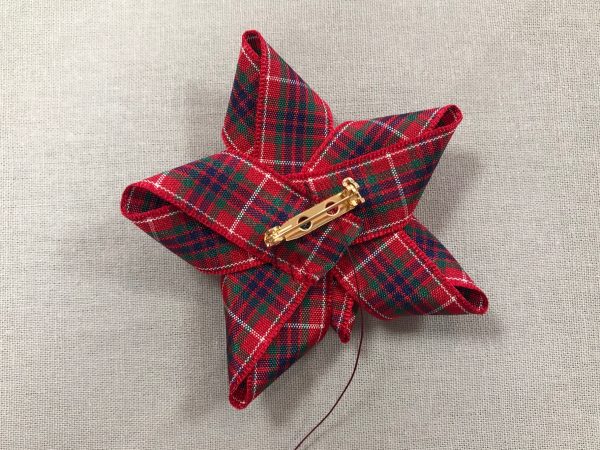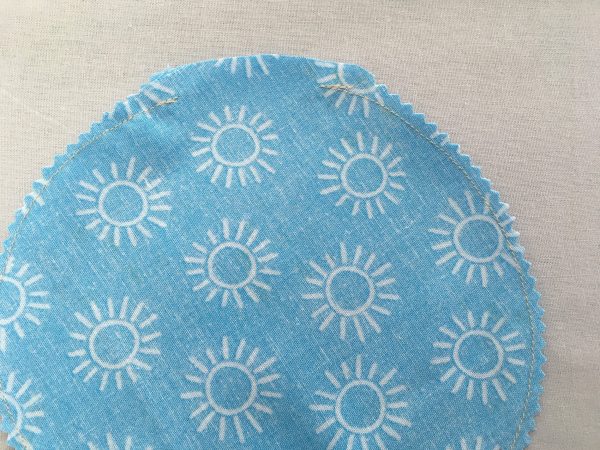Materials:
A lightweight cotton or muslin fabric 10cm x 55cm per scrunchie (we’ve used a cotton and a muslin fabric to make 2 scrunchies!)
25cm piece of 5mm Elastic
X2 safety pins
Tools and Equipment:
Needle, thread, scissors, Sewing Machine, Iron and Ironing Board, Large Knitting Needle

- Cut your fabric to 10cm x 55cm, press in half – length ways right sides together and stitch along the long 55cm side on the sewing machine with a straight stitch and 1cm seam allowence.

2. Turn inside out – a large knitting needle can help with this but be sure to use the blunt end and not the pointy as otherwise the needle could break through your fabric and rip it!

3. Press, and turn in one of the open ends 1cm.

4. Next grab your 25cm piece of elastic and attach a safety pin to each end. Take one end of the safety pinned elastic and also attach it to the turned in end of the fabric. Now use the other safety pinned end and use the safety pin to push through your elastic till it comes through the other end.

5. Un clip the safety pin from the end of the fabric – be careful not to loose the elastic back in the scrunchie! and tie both ends in a knot – 2/3 knots nice and tight to be enough!

6. Now tuck the raw end into the turned in piece of fabric.

7. Ladder Stitch the two ends together – to make sure it’s secure as being a hair tie this will getting pulled a lot go round twice.

There you have it! Please let us know how you got on with this project and if you share on social media tag us in with #bunyippotm so we can see them!




























 You will need:Materials:
You will need:Materials:





































